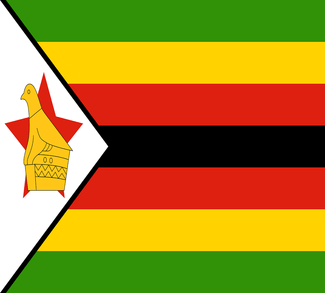In early June of 2024, the southern African countries of Angola, Botswana, Namibia, Zambia and Zimbabwe agreed to implement a new shared visa policy, simplifying travel between the countries involved. The agreement centers around the Kavango-Zambezi Transfrontier Conservation Area (KAZA), whose territory borders each state.
The move comes as an attempt at further regional economic integration. Though comparisons abound between it and the European Schengen zone visa, there are important differences. First, the borders between the KAZA countries will not be completely open, unlike in Europe’s Schengen zone. Visitors to the grouping, regardless of nationality, will still officially need to present travel documents when traveling between participating countries. Second, the agreement does not include free movement for participating citizens. To cross from one European country in Schengen to an EU country not in Schengen, like Ireland, travelers typically require proof of identity, such as an EU passport. Once inside the country, however, EU citizens possess full rights to live and work in that country without discrimination.
In February of 2023, the governments of Botswana and Namibia agreed to make cross-border travel possible with only national ID cards, scrapping the need for passports. Establishing the complete free movement of labor across borders, like in the European Union, has yet to materialize.
There are signs that the countries are moving in that direction. In a summit in Zambia, leaders agreed to extend the new visa policy to other regional countries. The organization for South African integration and the recognized regional pillar of the African Economic Community is the Southern African Development Community (SADC). Its goal is to promote greater political and economic cooperation among its 16 member states. Any extension of the KAZA visa and movement-of-persons policy would likely be centered on the member-states of the bloc.
The SADC is the successor body to the Frontline States Organization, a group tasked with preserving and protecting the nascent regional liberation movements of the 1960s and 1970s. Some of the SADC’s contemporary political activities include sending a peacekeeping mission to counter the first M23 rebellion in the Democratic Republic of Congo and election observers for Madagascar’s and South Africa’s May parliamentary polls. Its activities have come under the auspices of the group’s Organ of Politics, Defense, and Security Cooperation and have parallels elsewhere on the continent, such as ECOWAS in West Africa.
Perhaps more salient is the multilateral economic relationship the SADC establishes and which its members participate in. In 2008, all but two members of the SADC at the time ratified a free trade agreement, the exceptions being Angola and the DRC. In 2019, the newly ratified African Continent Free Trade Area (FTA) took effect and covers all SADC countries besides Madagascar, which has signed but not ratified the agreement. 47 out of the 55 member states of the African Union have ratified the AcFTA; all but Eritrea have signed it. The agreement’s size and scope make many preceding regional free trade agreements, like the SADC FTA, obsolete. The expansion of the proposed visa policy could serve as a catalyst for further reductions in barriers to trade among its present and future participants. An example being a potential customs union expansion that currently includes five SADC members.
The SADC founding treaty calls for the progressive elimination of borders to goods and people among its member states. It echoes similar objectives laid out by the African Union for the continent-wide organization. In both cases, the dream is likely decades away. Compared to the European Union, the countries of the SADC are significantly poorer than those of the former European Coal and Steel Community at the time of its founding. They are not beneficiaries of a massive Marshall Plan-style investment program that helped rebuild European infrastructure after World War 2. Many depend on primary resource exports, such as oil from Angola and minerals from Zambia. Currently, the region is relatively stable; the only major geopolitical flashpoint confronting the SADC is the Kivu conflict in the DRC, which is relatively isolated from the rest of the region.
Even as foreign powers like China and the United States are increasingly eyeing up much of the Southern African region, successful integration is likely to increase the leverage of the SADC’s member-states’ participation in the global economy on favorable terms. That is, assuming the history of similar trade blocs is any guide.
The views expressed in this article belong to the author(s) alone and do not necessarily reflect those of Geopoliticalmonitor.com.




